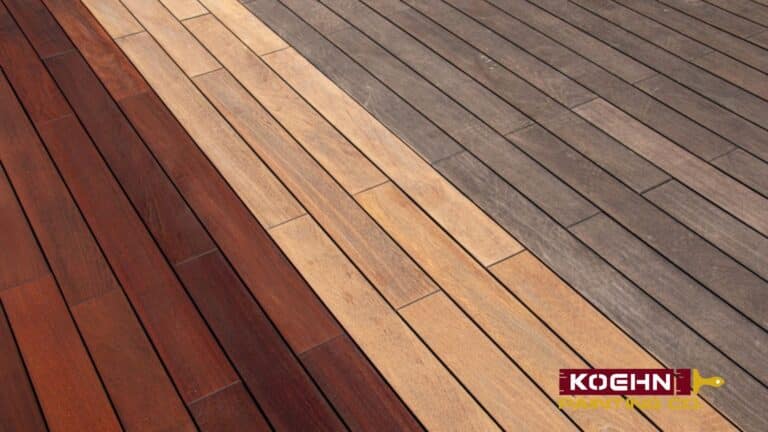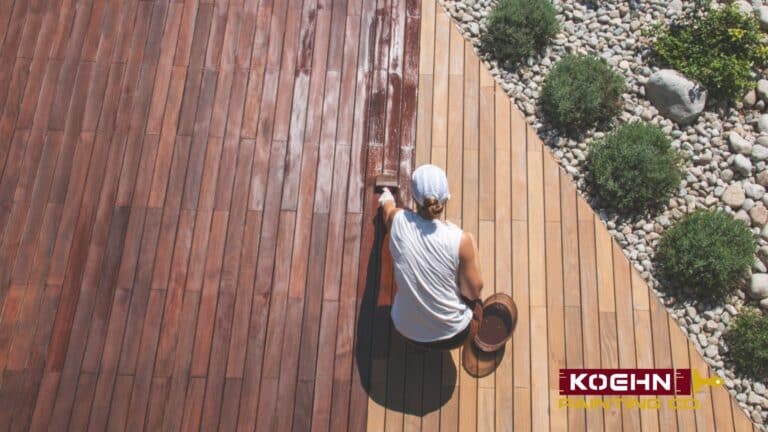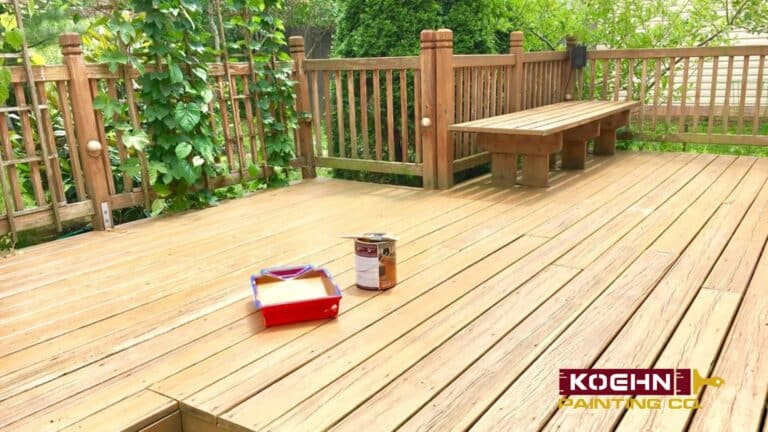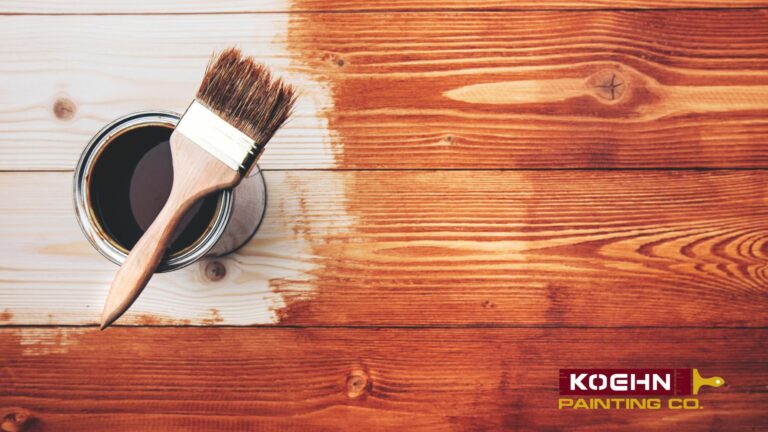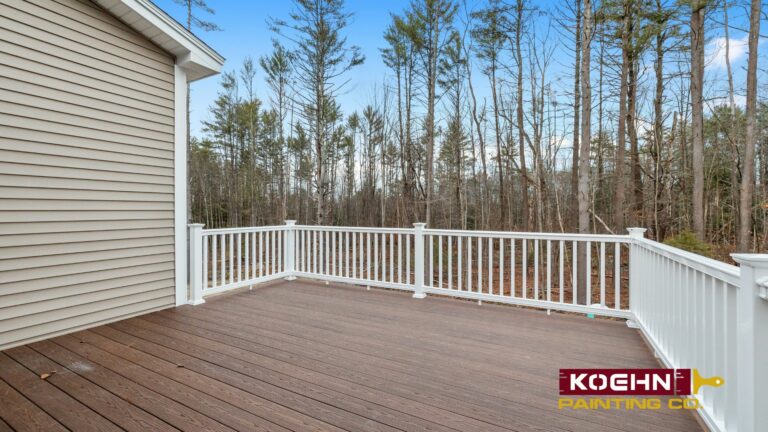Should I Stain or Seal My Deck? A Homeowner’s Guide
If you’ve looked out at your deck recently and thought “it’s looking a little tired”, you’re not alone. For many homeowners, decks are where summer memories are made: backyard barbecues, morning coffee, quiet evenings with a book. But like any part of your home exposed to sun, rain, and temperature swings, your deck takes a beating. So eventually, the question comes up: should I stain or seal my deck?
It sounds simple enough. But walk into any home improvement store and you’ll quickly find a dozen different products all claiming to protect your wood. Some promise deep color and UV defense. Others focus on water resistance. Some do both, kind of. And then there’s the question of maintenance, longevity, and, of course, what actually works for your climate and type of wood.
This guide is here to cut through the confusion. We’ll break down what stain and seal actually are (they’re not interchangeable), how they perform in the real world, and which might be the smarter move for your specific deck.
Stain vs Sealer: Two Deck Treatments, Two Very Different Jobs
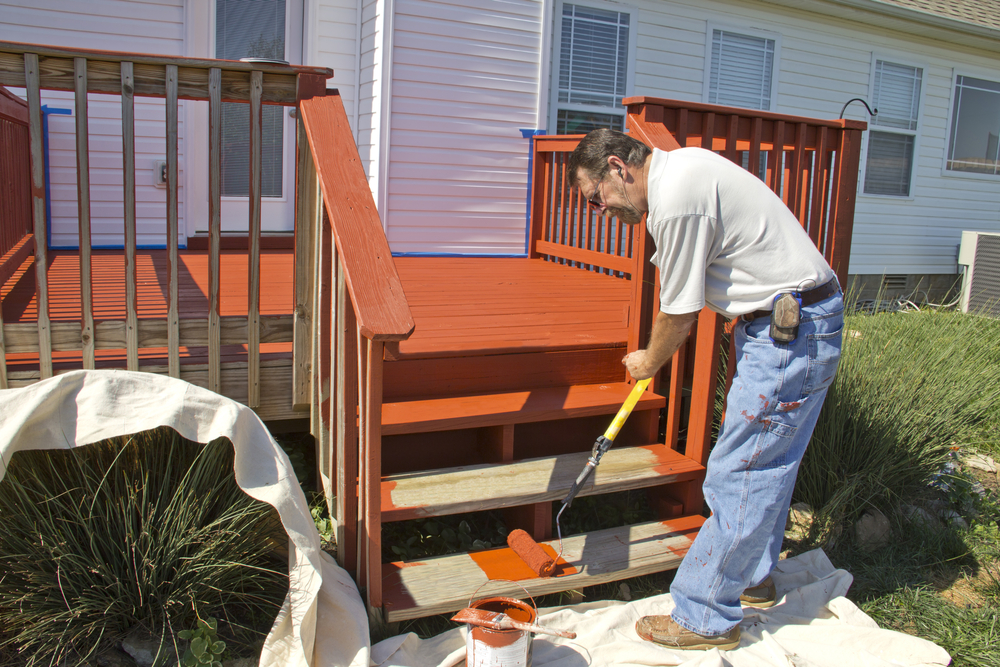
Before you decide what to buy or apply, let’s clear up a common source of confusion: stain vs sealer. The terms get tossed around a lot, but they aren’t interchangeable, and knowing the difference is the first step toward protecting your deck the right way.
When homeowners ask, “Should I stain or seal my deck?”, they’re really asking: Do I want surface-level moisture protection, or deeper, longer-lasting defense with a finished look? The answer to “Should I stain or seal my deck?” isn’t always obvious, especially when both products promise protection but deliver it in different ways. Both products help protect your wood from the elements, and either one is better than leaving your deck exposed. But they serve different purposes, last different lengths of time, and require different levels of maintenance and expertise.
Let’s break it down.
What Is a Wood Sealer?
A deck sealer is typically a clear or lightly tinted product that sits on the surface of your wood, forming a protective barrier. Its main job is to repel moisture, and it does that well. Keeping water out is critical if you want to prevent rot, mold, mildew, and structural warping over time.
However, sealing alone doesn’t do much to block UV rays. Over time, sunlight can still cause wood to fade, gray, crack, or split. Most sealers offer minimal UV protection, and depending on how much sun your deck gets, that nice color might last only 3–6 months. In general, you’ll need to reapply a sealer annually for consistent protection.
The upside? Sealers are easy to apply. You can usually roll or brush them on in a single afternoon, making them a go-to for DIYers who want quick results with minimal prep.
What Is a Wood Stain?
A deck stain, on the other hand, penetrates deep into the wood fibers, not just sitting on the surface. It contains pigments that alter the wood’s color, enhancing its natural grain or offering a more dramatic finish, depending on the opacity you choose.
That pigment does more than just change color: it acts as a UV shield, helping to protect the wood from fading and sun damage over time. Like sealers, stains also contain water-repelling ingredients. But because stains sink in rather than just coat the top, they’re better equipped to handle long-term wear and environmental exposure.
The tradeoff? The application is trickier. It requires prep work (like cleaning and drying), and depending on the type of stain, it can be more difficult to apply evenly. For the best results, especially with solid or semi-transparent stains, it’s smart to bring in a professional.
Stains last longer, too, up to five times longer than a basic sealer, depending on the product and conditions. While they may cost more upfront, stains can stretch your maintenance cycle, saving money and hassle in the long run.
If your main concern is moisture and you want something fast and simple, sealing might be enough, especially on fences or shaded decks with limited sun exposure. But if you want color, UV protection, and longer-lasting results, staining is a better investment.
Still asking yourself, should I stain or seal my deck? The answer depends on your deck’s material, sun exposure, usage, and how often you want to reapply. Whether you’re a first-time homeowner or maintaining a decade-old structure, “Should I stain or seal my deck?” is a question that comes up more often than you think.
We’ll dive into those factors in a later section, but understanding the core difference between stain vs sealer is step one to making the right call.
Key Differences Between Stain and Seal
Here’s a clear look at the key differences between stain and seal, side by side:
| Feature | Wood Sealer | Wood Stain |
| Application | Sits on the surface | Penetrates into the wood |
| Appearance | Clear or lightly tinted | Available in transparent, semi-transparent, or solid |
| UV Protection | Minimal | Strong (thanks to added pigments) |
| Water Resistance | Excellent | Excellent |
| Lifespan | 6–12 months (typical) | 2–5 years (depending on type and exposure) |
| Maintenance | Needs reapplication more often | Longer maintenance cycle |
| DIY Friendly? | Yes – simple to apply | Requires more prep and skill |
| Cost | Lower upfront cost | Higher cost but better long-term value |
In short, sealers are quick fixes for moisture protection, while stains offer a more durable, finished look with the added bonus of UV defense. If you’re asking yourself, “should I stain or seal my deck?”, this chart might help clarify which path fits your goals best.
Contact us here if you would like to find the best painting contractor for your residential or commercial painting needs.
Choosing the Right Formula: Types of Stains and Sealers Explained
Not all deck coatings are the same, and choosing the wrong one could waste money and a weekend on something that will peel, fade, or need redoing quickly.
The real question isn’t just “should I stain or seal my deck?” It’s what kind of stain or sealer actually fits your deck, your climate, and your standards?
Types of Stains:
- Transparent stains: If you love the natural look of your deck and just want to refresh it, this is your top choice. It enhances the wood’s color without hiding its grain or texture, giving a rustic, organic finish while providing basic protection against UV rays and the elements. Keep in mind, though, any surface imperfections will still be visible; this stain won’t hide dents, discoloration, or repairs. It’s best suited for newer or high-quality wood with minimal damage.
- Semi-transparent stain: For homeowners who want to add some pigment but still let the wood grain show through, semi-transparent stains strike a solid balance. They offer better durability and UV protection than clear options and are a popular middle ground between preserving wood aesthetics and protecting the surface. You’ll still need to reapply over time, but not quite as frequently as with a transparent stain. It’s great for decks that are in good condition but could use a bit of color and extra shielding.
- Solid stain: When your deck shows signs of wear or aging, or if you want to completely change its color, a solid stain offers full coverage. These stains sit on top of the wood like paint, hiding grain and imperfections. Just remember: once you choose solid, you can’t go back without a major refinishing job. Still, it remains one of the most durable options available. It’s ideal for older decks with damage or when a total color change is desired.
Types of Sealers:
- Clear sealer: Clear sealers are ideal when your main goal is to showcase the natural beauty of the wood. They contain no pigment, so they don’t effectively block UV rays, but they do prevent moisture penetration and highlight the wood’s grain. Clear sealers are simple to apply and require minimal preparation, making them a low-maintenance choice. Just remember they generally last only one to two years before needing reapplication. They are best suited for cedar, redwood, or newer decks in good condition where emphasizing wood texture is more important than long-term protection.
- Water-based sealer: Water-based sealers are a popular modern choice because of their low VOC content, quick drying time, and easy cleanup. They are increasingly durable but may wear off via flaking or peeling, especially on horizontal surfaces. If your deck has a previous water-based finish, you might need to strip or sand it before reapplying. Water-based sealers are ideal for environmentally conscious homeowners seeking a cleaner, faster process and willing to refinish more often if necessary.
- Oil-based sealer (natural oils): Made with traditional ingredients like linseed or soy oil, these sealers penetrate deeply into the wood and wear more naturally, fading gradually rather than peeling. They tend to hold up well under foot traffic and are less likely to crack or flake. However, they contain more VOCs and can promote mold growth in damp or shaded areas. If your deck gets limited sun or stays moist for long periods, you might need to add a fungicide to keep mold at bay. Ideal for decks that need long-lasting moisture protection and a soft, natural finish.
- Alkyd-based sealer (modified oils): Alkyds are improved versions of traditional oil-based sealers. They provide faster curing, longer durability, and better resistance to mold compared to natural oils. Although they are more costly, they lower the risk of fungal growth and offer greater durability, especially in climates with heavy rain, freeze/thaw cycles, or high humidity. Ideal for decks exposed to harsh elements where you want the advantages of oil without the disadvantages.
With so many options, the key is finding the right match for your wood, environment, and maintenance willingness. Now that you know the formulas, let’s consider the real-world pros and cons of staining and sealing.
Pros and Cons of Staining and Sealing
Choosing between staining and sealing your deck involves considering performance, maintenance, and durability. Here’s a brief overview to help you determine which option best matches your goals.
Staining pros:
- Enhances wood grain and adds rich color while offering UV and moisture protection
- Can last between 2–5 years (darker or solid stains perform best)
- Solid stains can mask discoloration or imperfections
Staining cons:
- Requires careful prep and multiple coats for uniform coverage
- May obscure wood grain (especially solid stains)
- Needs reapplication every 2–5 years, depending on exposure
Sealing pros:
- Preserves natural wood appearance and enhances grain—ideal for quality woods
- Excellent moisture resistance which helps prevent mold, mildew, and rot
- Easy to apply with quick-drying formulas, especially water-based sealers
Sealing cons:
- Offers minimal UV protection; color will fade, and wood may gray over time
- Requires frequent reapplication—typically every 1–2 years
- Oil-based sealers may yellow and emit a strong odor; water-based sealers can flake on horizontal areas
Many homeowners opt to stain, then seal—combining color, UV protection, and moisture defense for a more complete shield. In any way, deck care is about striking the right balance between beauty, durability, and upkeep.
Deck Sealing vs Staining: How to Choose?
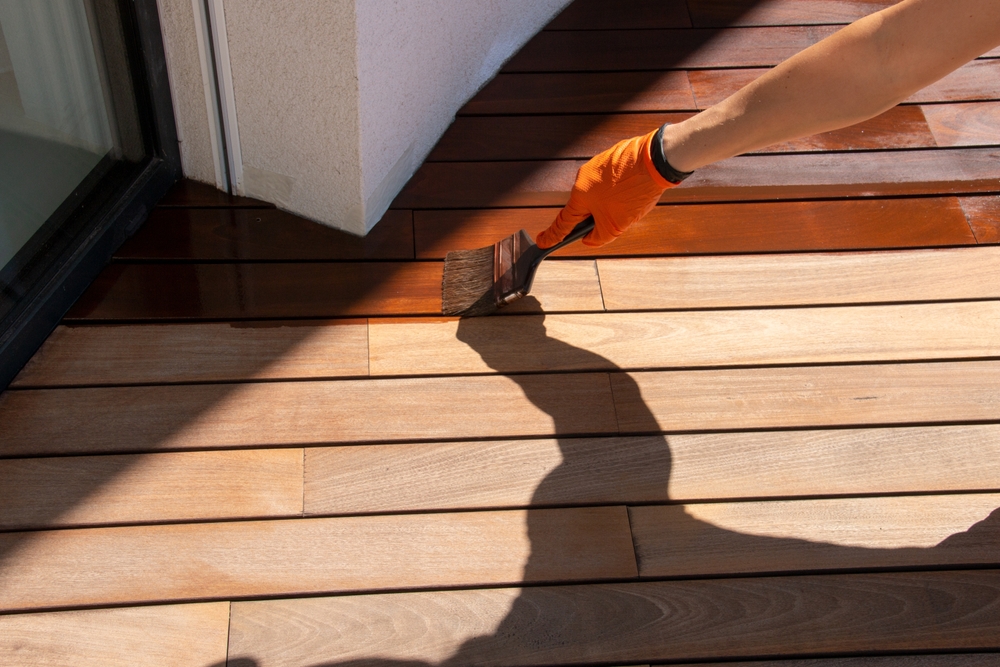
We’ve discussed what they are, their differences, their formulas, and their pros and cons. Still, choosing between deck sealing and staining can be difficult and depends on the right tools for the job, based on wood type, local climate, your aesthetic goals, and how much maintenance you’re willing to do. If you’re still wondering “should I stain or seal my deck?” the following information might help clarify things for you.
When choosing stain vs sealer, you should pay attention to:
- Wood type and condition: Hardwoods such as cedar, redwood, and teak naturally resist decay and look great when sealed; you can protect their texture without changing the color. In these cases, deck sealer is a smart, natural option. Pressure-treated or older softwood decks respond better to staining. The added pigment helps even out aging, conceal imperfections, and provide UV protection.
- Climate and Exposure: Hot, sunny areas require UV protection. Stains, especially semi-transparent or solid ones, block sun damage better than clear sealers and can last 2–5 years. Rainy or humid regions benefit from a sealer’s moisture resistance. When combined with stain, you get both water and UV protection.
- Desired look and color: Opt for a clear deck sealer if you love the natural wood grain and want a subtle, glossy finish. Prefer a hint of color while showing grain? Choose semi-transparent stains. Want bold coverage or camouflage for imperfections? Solid stains offer paint-like durability.
- Maintenance and cost: Clear sealers usually need reapplication every 1–2 years. They are affordable but require more frequent maintenance. Stains last longer—2–5 years, depending on opacity—but cost more and need thorough prep for good adhesion. You can combine stain and sealer or use hybrid products to balance longevity and appearance.
So, when people ask us “can you just seal a deck without staining?”, we usually say yes, you can. It’s often a smart and budget-friendly choice if your main goal is moisture control rather than UV protection. But remember: clear sealers don’t add pigment, so your deck will still fade over time.
Bottom line: there’s no universal answer; it’s about matching finish to your wood, setting, style preference, budget, and how often you’re ready to reapply. Now, let’s move on to who should do the job. DIY or call in the pros?
To Stain or Seal Yourself—or Not
Thinking about tackling your deck project yourself? Here’s the real deal.
DIY staining or sealing costs less and gives you direct control, but it requires careful preparation like cleaning, stripping, drying, and sanding. Mistakes can lead to uneven color, peeling, or early failure.
Hiring a pro like Koehn Painting, on the other hand, ensures that professionals tackle the project, people who know which deck sealer or stain matches your climate and wood type. We bring the proper equipment, thoroughly prepare surfaces, and ensure a flawless, even finish, saving you weekends and headaches.
Whether you’re planning to DIY or hire help, the core decision—should I stain or seal my deck—still shapes how much prep, cost, and upkeep you’ll be taking on.
Thinking long-term? Investing in a pro now helps avoid costly redo jobs later and ensures your deck is protected for years.
Should I stain or seal my deck?
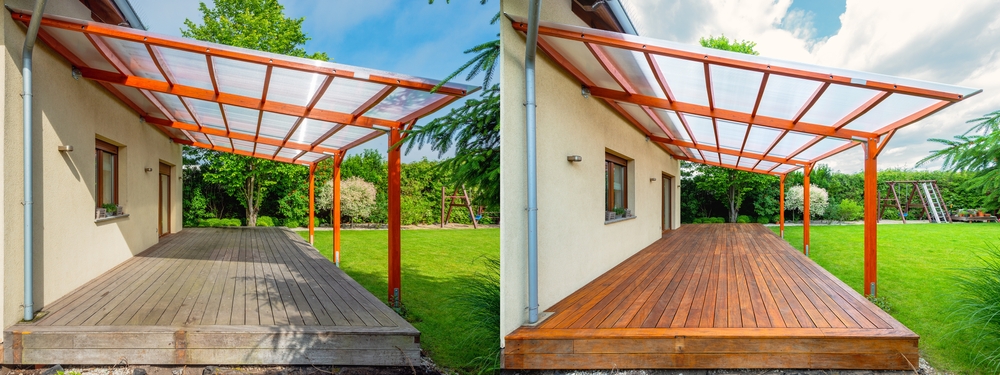
So, should I stain or seal my deck? The answer depends on what you value most: natural look, durability, color, or easy upkeep.
If you want to showcase high-end wood and don’t mind reapplying every year or two, a clear deck sealer may be enough. But if your deck takes a beating from sun and weather—or you’re looking to refresh its color and hide imperfections—staining is the smarter, longer-lasting investment.
At the end of the day, asking “should I stain or seal my deck” is really about choosing the balance of beauty and protection that fits your lifestyle and wood.
We’ve discussed the differences, types, and real-world considerations. But sometimes, the best option is to seek expert help to ensure you don’t waste time or money on the wrong product or poor application.
At Koehn Painting, we help homeowners like you make confident, informed decisions—and execute them flawlessly. Whether your deck needs a quick refresh or a full restoration, our team has the experience and tools to deliver results that last.
Discover the Koehn Painting difference – contact us today for a free estimate and step into a vibrant, freshly painted home!

